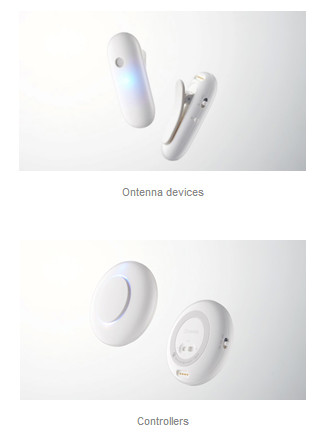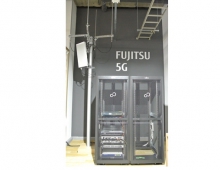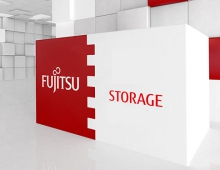
Fujitsu Launches New Service Featuring Ontenna, a User Interface Device to Sense Sound with the Body
Fujitsu Limited will launch next month a service supporting sports and cultural events using Ontenna, a device that lets users sense sound with their bodies.
Fujitsu is also providing a free trial version of Ontenna for schools for the deaf. The trial will begin in 30 schools, with the goal of encouraging the use of this device in day-to-day education for deaf students.
Developed in collaboration with members of the deaf and hearing impaired community, Ontenna is a user interface device that can be equipped to users in various ways - worn like a hair pin or attached to the shirt collar-, letting them sense sound characteristics through vibration and light.
Ontenna is a user interface device that can be equipped to users such as in their hair, on their earlobe, shirt collar or sleeve, enabling them to feel sound characteristics with their bodies through light and vibration. Because hearing impaired users can understand the volume of their own voices and of sounds around them, Ontenna can be used to practice controlling the strength and weakness of sound, such as during speech practice or when practicing an instrument including drums and recorders.
Sounds between approximately 60 and 90 dB are conveyed to the user via 256 levels of vibration and light. By converting sound vibration patterns from a sound source to vibration in real time, the user can feel the rhythm, pattern, and volume of sounds.
The device can not only be attached to the hair like a hairpin, it can also be attached to places. It can be easily charged with magnetic charging, reducing the burden on the user.
With sound zoom function that expands the range of sound acquisition, the device can be used in different ways, depending on the environment. If used in a crowded environment, it can be set to respond only to loud sounds (approximately 80-90 dB). If used in a quiet environment, such as a classroom, it can be set to respond to ordinary conversations as well (approximately 60-90 dB).
The system also features a smart mode where multiple Ontenna devices can be controlled simultaneously using a controller.
The rhythm and pattern of the sound detected by the controller can be conveyed to multiple Ontenna devices in real time.
Finally, multiple Ontenna devices can simultaneously vibrate at the push of a button on the controller.

The manufacturer of Ontenna, Fujitsu Electronics Inc., plans to develop enterprise businesses using Ontenna and begin sales to individual consumers via ecommerce sites, in July 2019.
By providing this service, Fujitsu aims to create a future that can be enjoyed by both hearing and deaf people.
Fujitsu began the research and development of Ontenna in fiscal 2015, with the goal of delivering sound to the deaf.
Fujitsu is offering sports and culture organizations an event support service using Ontenna. The event support service provides the Ontenna devices as well as a full range of services, from setting up the system environment to operation on the day of the event, making it easy for event operators using Ontenna.
Because Ontenna is not reliant on language, it can also provide a new way of attending events regardless of disability or nationality. Accordingly, Fujitsu aims to establish a model case for creating an inclusive society by using Ontenna.
The Ontenna Event Support Service will be available in Japan from July 1, 2019. Prices start from JPY 200,000/day for a set of 30 Ontenna devices.





















